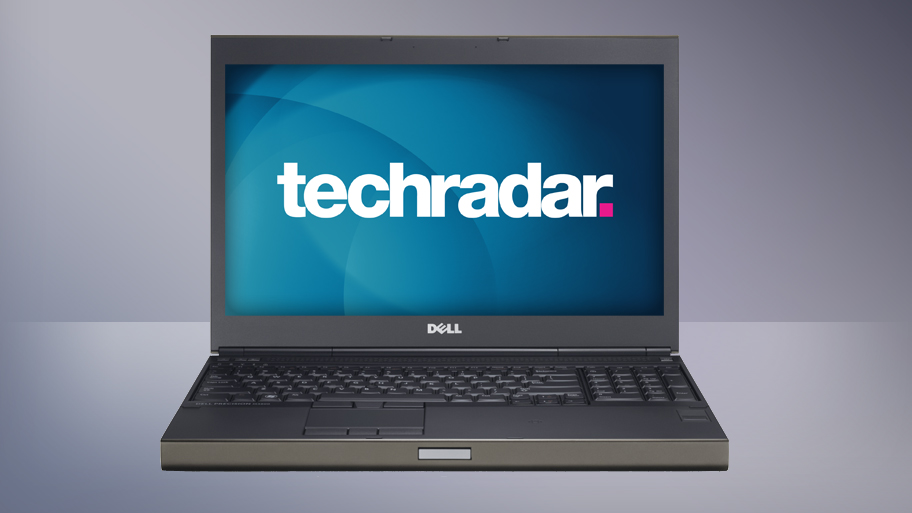TechRadar Verdict
While it might not be the most attractive laptop on the market the Dell Precision M4800 packs a punch when it comes to specs. There are some negatives that hold it back from being truly great, however.
Pros
- +
Powerful CPU performance
- +
Excellent GPU performance
- +
32GB of memory available
- +
Huge array of expansion ports
Cons
- -
TN screen has poor colour reproduction
- -
Hybrid hard disks aren't great
- -
Like most workstations, it's big, heavy and ugly
Why you can trust TechRadar
The Dell Precision M4800 is a powerhouse. Claimed by Dell to be the world's most powerful 15-inch mobile workstation, it packs enough hardware to allow for desktop-like performance.
Although Dell has recently launched a mobile workstation that comes in a thin chassis, the Dell Precision M3800, the Dell Precision M4800 is more in keeping with the traditional appearance of the Precision line. It doesn't try to be thin or light but instead has a solid, tank-like chassis that's 40 mm thick and weighs 2.9 KG. You could squeeze two or three entire Ultrabooks into the same space.
The Dell Precision M4800 is coated in Dell's signature gunmetal dark grey case. It's a look that screams professional use more than fun and games - whip out the thick-and-heavy M4800 on a train, complete with its array of flashing status lights and expansion ports, instead of a small device like a tablet, and your fellow commuters will undoubtedly imagine you're very serious about computing.
No corners have been cut to reduce the Dell Precision M4800's physical size. A total of 11 status LEDs flicker on and off. There's a built-in optical drive, smart card reader, SD card reader, four USB 3 ports, with a further E-Sata/USB 2 port at the rear. There's also DisplayPort and HDMI rounded off by Gigabit ethernet as well. Dell has sensibly retained the analogue D-Sub connector, since the majority of displays and projectors in office environments still use this video standard.
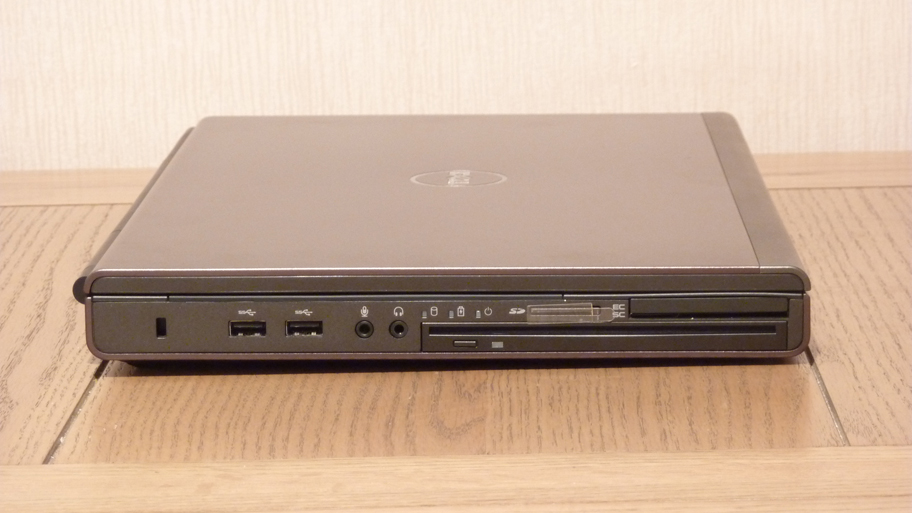
Dell avoids the isolated-style keyboard, using a more traditional keyboard style. It squeezes a full-size number pad onto the side as well, and has a 'nipple' to control the mouse right in the centre, between the G and H keys.
The physical volume controls in the top left are joined by WiFi, Bluetooth, disk access, and power indicators. The trackpad is disappointingly small but there are physical buttons for left and right clicking.
Dell's site offers four specific M4800 models, which start at £1179 ex VAT. The entry-level version has a 2.7 GHz quad-core Intel Core i7 4800MQ processor, 8GB of memory, a 1080p full HD display, 500GB hard disk and an Nvidia Quadro K1100M GPU.
You also can create your own Dell Precision M4800 specification, and choose from a long list of configuration options. It's one of the few laptops that allows you to have 32GB of memory, which seems an excessive amount for office applications and web browsing, but it's great for engineers who work with multiple-gigabyte projects or photographers who edit photos in RAW format.
You can choose a larger hybrid hard disk, or an SSD from 128 GB to 512 GB, an AMD FirePro M5100 or an Nvidia Quadro K2100M GPU. If you want the highest possible performance, you can add a 3 GHz Intel Core i7 4930MX processor, which has a Turbo Frequency of 3.9 GHz, unbelievably fast for a 15-inch laptop.
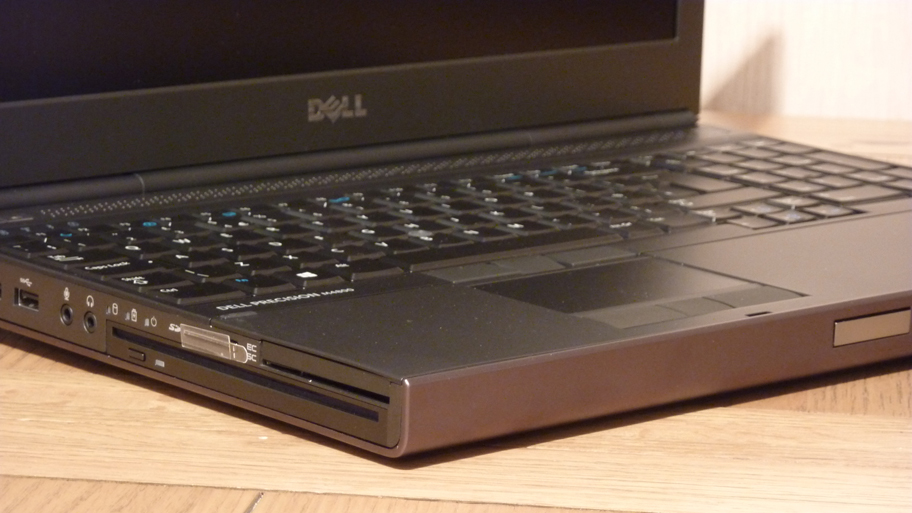
The version tested here has 16GB of memory, a 2.8 GHz Core i7 4900MQ processor, 1TB hybrid hard disk and an Nvidia Quadro K2100M graphics card with 2GB of GDDR5 memory.
The Nvidia Quadro K2100M is of particular interest, as it has the same 576 shaders and clock speeds as the beefier previous-generation K3000M GPU. The K3000M has more memory and higher memory bandwidth, but a much higher TDP, which restricts its use to 17-inch laptops.
The M4800 can be ordered with a QHD+ (3200 x 1800) display, but the Dell Precision M4800 tested here is the 1920 x 1080 version, which has a twisted-nematic (TN) display. This has some benefits, such as less drain on the battery, but also some downsides, as we found in our testing. The QHD+ screen is still an option though, if you customise the configuration.
The screen has a matte finish, which looks infinitely better than a glossy screen, and is not touch-sensitive. You get Windows 7 as standard, rather than Windows 8 or 8.1. Either version of the newer operating system is optional, but Microsoft's latest has gone down with workstation users as well as praise for David Moyes at a Manchester United match.
Performance
The gap between top-of-the-line mobile CPUs and desktop chips is narrowing with each generation. The high-end quad-core chips available in the Dell M4800 are remarkably powerful, and performed superbly in benchmark tests.
The Cinebench 15 CPU score of 609 is just 6 points shy of the score achieved by an older desktop 3.5 GHz Intel Core i7 3770K Ivy Bridge CPU. A render test in 3D Studio Max was 30 seconds faster with the Dell Precision M4800 than the same desktop Intel Core i7 3770K processor. That's great news for 3D designers, since the high-end specification of the Dell Precision M4800 is perfect for use with software such as Solidworks, Maya and Nuke.
While there's still quite a distance between desktop and mobile graphics card performance, the Quadro K2100M is certainly a powerful GPU. It delivered a score of 69.3 in Cinebench 15, which is about a third less than you get from an entry-level desktop workstation card.
Its SPECViewPerf scores were lower by a similar margin, but still point to 3D software running more than adequately. When the Dell Precision M4800 is kitted out with the full complement of 32GB of memory, expect to be able to work with highly detailed models in CAD software.
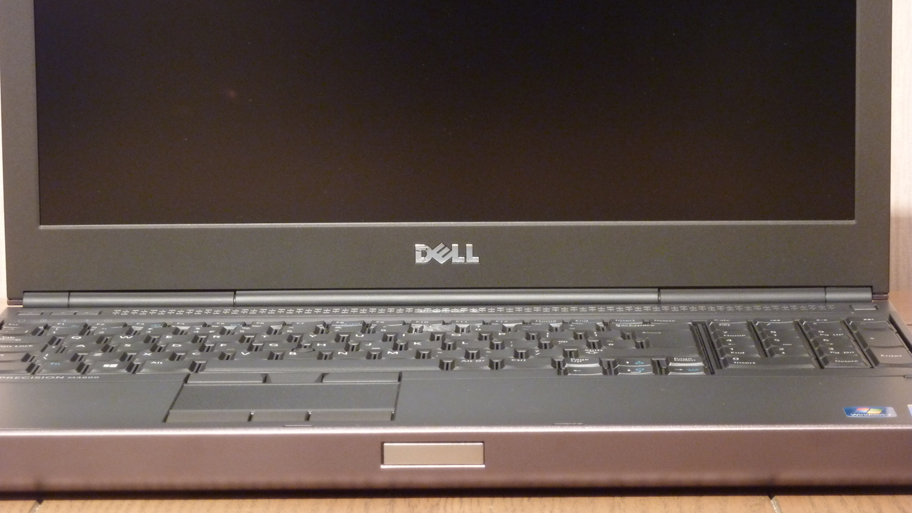
In 3DMark, the scores are more than reasonable, with 1670 points in the taxing 'Fire Strike' test a sign that you should be able to run most modern games, although don't expect to be able to enjoy a constantly high frame rate with anti-aliasing set to maximum.
The hybrid hard disk is so named due to its inclusion of 8GB of flash memory to act as a cache for the data on the hard disk. It's not as good as having a true SSD, but does work out less expensive for higher capacities. Nevertheless, its presence was felt in slower boot times and application load times than systems equipped with an SSD.
The Dell Precision M4800 measured fairly middling burst read speeds of 47 MB/s when tested with CrystalDiskMark, but faster write speeds of 106 MB/s.
Arguably, SSDs are now essential rather than a luxury, given the overall performance difference they make. The Dell Precision M4800 can be customised with an SSD boot drive and a hard disk in the secondary bay, which would undoubtedly be our preferred configuration, although this adds to the cost - £264 for the SSD and up to £98 for the 1TB hard disk.
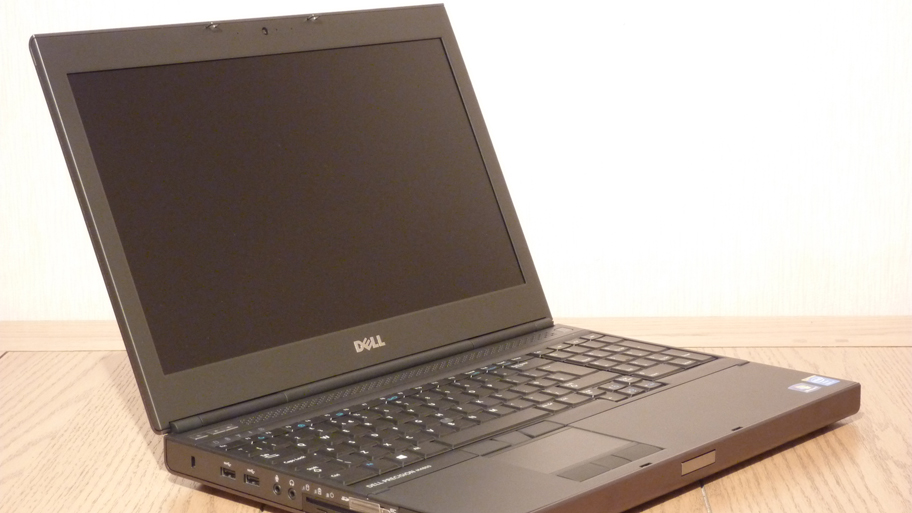
The biggest disappointment is the display. TN panels simply aren't very good, and may make you wince the moment the Dell Precision M4800 is switched on. With an IPS or IGZO display, you can expect viewing angles approaching 180 degrees, so when viewed from the side, the display looks identical to when it's viewed head-on. But TN panels looks darker from the side, and aren't as clear.
We used a Spyder4 colorimeter to measure the tonal response of both the original Dell Precision M4800 with an IGZO QHD+ display and the 1080p version. The IGZO screen provided 98% SRGB coverage, but the TN panel could only muster 80%, which is nothing special by modern standards.
Graphics professionals are likely to be one of the main groups interested in the high performance of the top-end Dell Precision M4800 models, so less-than-accurate colour response is disappointing.
However having a matte finish makes up for it somewhat, since it's much easier to see what you're doing in a brightly lit room. Being 1920 x 1080 it also neatly avoids any issues with DPI scaling that is a current problem with high-PPI displays in certain software packages, including Adobe Creative Suite. A 15.6-inch display at this resolution looks absolutely perfect.
In battery life tests, the TN 1080p screen in the Dell Precision M4800 does seems to drain power less than the 3200 x 1800 QHD+ display. However, the improvement isn't huge. PC Mark 08 lasted for 2hrs 59 minutes, which is about 50% less than an Ultrabook manages.
